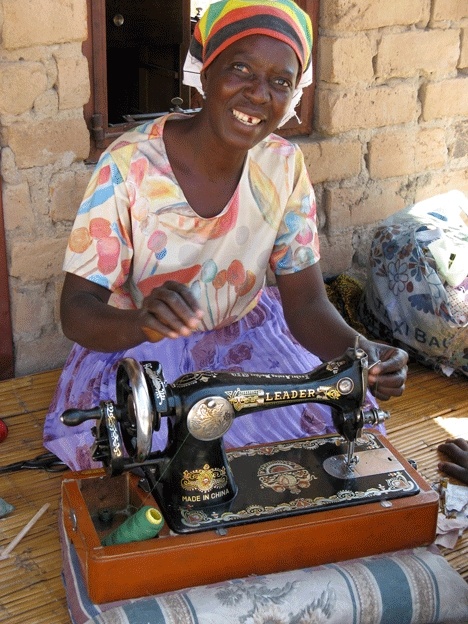Imagine the life of a woman subsistence farmer in the dusty outback of rural Zimbabwe.
Now picture that same woman, farmer, mother, and head of household producing art for the American market.
Such a dream did come true for many of the women who live in the communal village of Weya in eastern Zimbabwe through the Zimbabwe Artists Project (ZAP).
Whidbey Islanders will be able to see the art of Weyan women at the Unitarian Universalist Congregation of Whidbey Island Art Gallery in an exhibit which opens Sunday, Nov. 22 and runs through the Christmas season. The project’s founder and director, Dick Adams, will introduce the show at the opening at 11:30 a.m.
In the 1990s, Lewis and Clark College sociology professor Adams led several tours for his students in Zimbabwe, where he created programs that focused on gender and social change.
In 1997, some artists from Weya, who were hosts to him and his students, asked him to find a market for their art.
Adams was in a quandary.
“Even though I was totally unequipped with marketing skills, and even though I’d never had any desire to sell things, I couldn’t say no to the people who had been so good to my students,” he said. “So my answer was, ‘Let me see what
I can do.’”
Thus the nonprofit Zimbabwe Artists Project was born.
“Over 10 years later, here I am, having spent the most rewarding decade of my life doing what they asked me to do.”
The women of Weya are unlikely businesswomen. Many have little formal education and have been subsistence farmers for most of their teenage and adult lives. The majority are mothers, some are widowed and single heads of the households, because throughout Zimbabwe, men leave the rural areas to seek work in cities. Women’s income from agriculture is unpredictable and limited. The sale of their art helps them to afford food, clothing, school fees, medicines, transportation, seeds and fertilizer.
Since the market for Weya art in Zimbabwe is extremely limited, sales in the U.S. are critical. But the point of the project goes beyond business.
One of the goals of the project is to reveal the history and culture of these Zimbabwean women to people in other areas of the world, to reveal who they are as women, mothers, farmers and artists. Stereotypes of plighted masses give way to images of rural African women as strong, talented and fully capable human beings.
“It’s about women, helping women help themselves and their families,” Adams said.
Although there is a small percentage of male artists in the community, Adams said it is the women who stand out.
“They are the ones who do almost everything to keep their families going — farming, gathering firewood, going to the community well for water, cooking, cleaning, taking care of children, etc. And then they do art. I’m constantly amazed by their capacity to create beautiful things when they’re so pressured by daily life.”
With so much to do in a day, these artists don’t have time to sit around waiting for the “muse” to inspire them. For the women of Weya, necessity is indeed the mother of invention, and yet they somehow still manage to produce beautiful pieces of embroidered art, fabric and board paintings, quilts and appliqués that speak to a world of African culture and the natural world. The work retains a quality that is unique to the women of Weya.
The bonus is not only financial, but psychological.
The idea that Americans value something they have created is a great source of self-esteem for women who have spent most of their lives mainly trying to survive.
“They know we think of them as artists,” Adams said. “There is something special about that, because it means there is something special about them.”
Although the past decade has been disastrous economically for all Zimbabweans, the artists have managed to keep their families fed, unlike many other people in their country.
Their art has sustained them and has given them hope for a better life, Adams said.
Looking back, Adams realizes it is he who is lucky to have stumbled into such a life-affirming experience.
“I’ve been given the opportunity to put into practice, with one small community in Africa, values that I’ve believed in for decades — the importance of dignity and self-respect,” Adams said. “When I’m there, I’m a ‘rich’ person surrounded by people whose basic needs are seldom met. This creates challenges on almost a daily basis. There is no end to the learning one can do that keeps self-respect and dignity — both theirs and my own — intact.”
An opening reception party will follow the presentation with refreshments.
The UUCWI Art Gallery is in the church north of Freeland off Highway 525.


